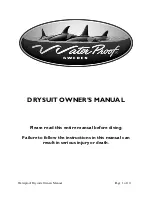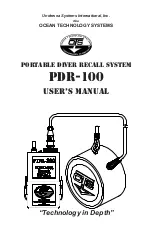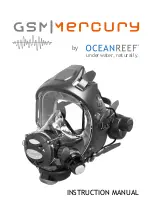
Instruction Manual
HI 38018
Free Chlorine
Low and Medium
Range
Test Kit with
Checker Disc
Dear Customer,
Thank you for choosing a Hanna Product.
Please read the instruction sheet carefully before using the
test kit. It will provide you with the necessary information for
correct use of the kit. If you need additional information, do
not hesitate to e-mail us at tech@hannainst.com.
Remove the chemical test kit from the packing material and
examine it carefully to make sure that no damage has
occurred during shipping. If there is any noticeable damage,
notify your Dealer or the nearest Hanna office immediately.
Each kit is supplied with:
• HI 93701-0 Free Chlorine Reagent, powder packet
(200 pcs);
• Demineralizer Bottle with filter cap for about 12 liters
of deionized water (depending on the hardness level
of water to be treated);
• 1 checker disc (containing a mirror, a mirror holder
and the disc);
• 2 glass vials with caps;
• 1 plastic pipette (3 mL).
Note:
Any damaged or defective item must be returned in its
original packing materials.
ISTR38018R2 02/07
Chlorine is the most commonly used water disinfectant in
applications that vary from treatment of drinking water and
wastewater, pool and spa sanitization, to food processing
and sterilization. Chlorine present in water binds with bacteria,
leaving only a part of the original quantity (free chlorine) to
continue its disinfecting action. If the free chlorine level is
improper with respect to pH, water will have an unpleasant
taste and odor and the disinfecting potential of the chlorine
will be diminished.
Free chlorine reacts with ammonium ions and organic
compounds to form chlorine compounds resulting in
diminished disinfecting capabilities compared with free
chlorine. Chlorine compounds together with chloramines form
combined chlorine. Combined chlorine and free chlorine
together result in total chlorine.
While free chlorine has a much higher disinfectant potential,
combined chlorine has a much higher stability and has a
lesser volatility.
Note:
mg/L is equivalent to ppm (parts per million).
The reaction between chlorine and the DPD reagent causes a
pink tint in the sample which is proportional to the chlorine
concentration.
READ THE ENTIRE INSTRUCTIONS BEFORE USING THE KIT
• To measure free chlorine in the
0-0.7 mg/L
range,
verify that the mirror, its holder and the disc are pre-
installed in the checker disc. If not, install them as shown
in the figure.
• Use the pipette to fill
each glass vial with 10
mL of sample (up to
the mark).
• Insert one of the vials into the left hand opening of the
checker disc. This is the blank.
•
Remove the cap and fill
the Demineralizer Bottle
with tap water.
• Replace the cap and
shake gently for at
least 2 minutes. The
demineralized water is
now ready.
• Flip open the top of the Demineralizer Bottle cap. By
gently squeezing the bottle, add demineralized water to
the other vial up to the 20 mL mark. Replace the cap
and shake to mix.
10 mL
• Remove the cap and add 1 packet of HI 93701-0 Free
Chlorine Reagent. Replace the cap and mix. This is the
reacted sample.
• Remove the cap and insert the reacted sample into the
right hand opening of the checker disc.
• Hold the checker disc so that a light source illuminates
the samples from the top.
• Keep the checker disc at a distance of 30-40 cm (12-
16") from the eyes to match the color. Rotate the disc
while looking at the color test windows and stop when
you find the color match. Read the value in the result
window and divide it by 5 to obtain mg/L (or ppm) of
Chlorine.
Range
0 to 0.7 mg/L (ppm) as Chlorine (LR)
0 to 3.5 mg/L (ppm) as Chlorine (MR)
Smallest Increment
LR: 0.02 mg/L
MR: 0.1 mg/L
Analysis Method
Colorimetric
Sample Size
10 mL (LR), 5 mL (MR)
Number of Tests
200
Case Dimensions 235x175x115 mm (9.2x6.9x4.5")
Shipping Weight
647 g (22.8 oz.)
www.hannainst.com
Specifications
Significance and use
Chemical Reaction
Instructions




















